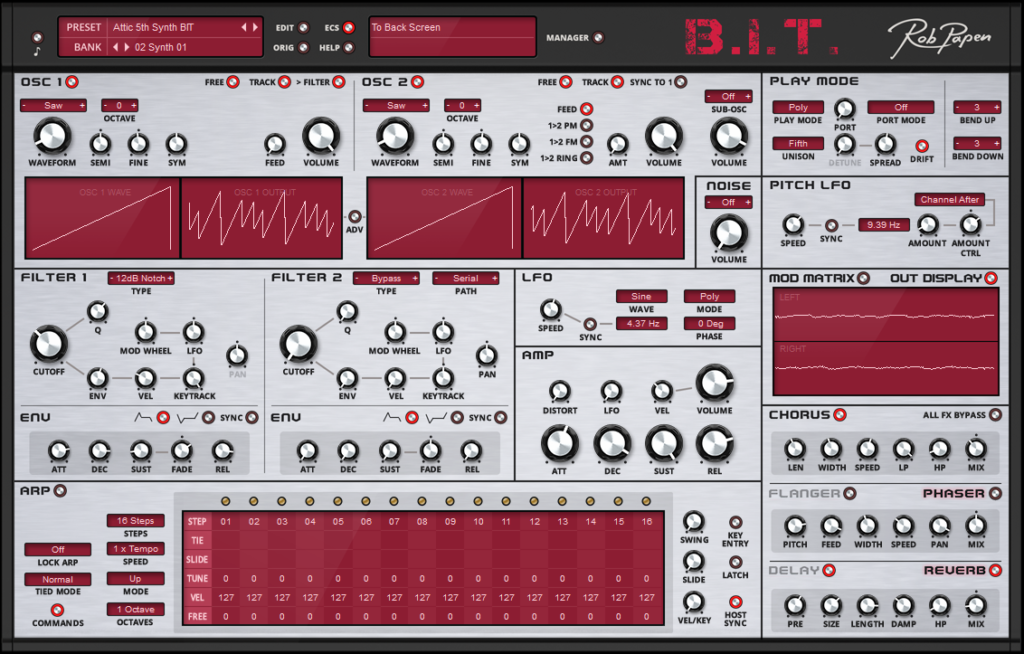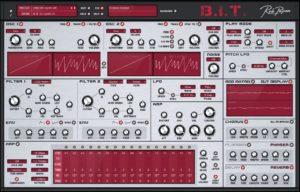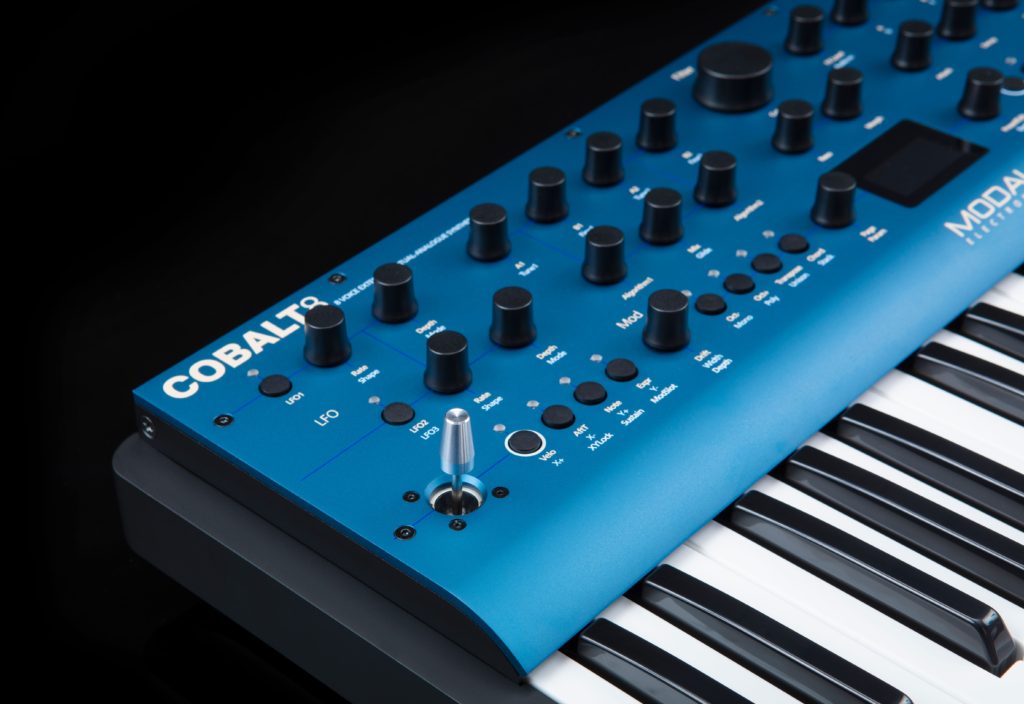
Bristol, UK: leading British synthesiser manufacturer Modal Electronics is proud to announce availability of COBALT8 — an immensely powerful, eight-voice extended VA (Virtual-Analogue) synthesiser that brings traditional and entirely new analogue-style sound textures to modern music creation and production as an innovative, sophisticated synthesis concept comprising two oscillator groups with selectable algorithms in self-contained elements enabling multiple oscillator modulations, an all-new 4-pole morphable ladder filter with switchable configurations, an unparalleled modulation engine, and much more besides, extending far beyond the limits of its analogue forefathers — as of October 29…
Creatively kickstarting a new synthesiser series by building on the tradition of warm and punchy analogue-style synth sounds seeded by bygone legendary synthesisers, COBALT8 creatively unlocks the full potential of analogue waveforms with up to 64 high-resolution VA oscillators with extended drift — up to eight for each of its eight true polyphonic voices. The two independent and self-contained Osc (oscillator) groups include sine, pulse, triangle, and sawtooth waveforms alongside 34 unique algorithms allowing for complex analogue synthesis techniques, built-in cross-modulation (sync, ring modulation, and more), PWM (Pulse Width Modulation), smooth morphing between VA waves, bit crushing, and filtered noise — unlike any other VA synthesiser before it, increasing creative options for new-generation synth sounds. Speaking of which, Algorithm1 and Algorithm2 each have an associated simple-to- use pair of controls — A1 and B1, A2 and B2 — chosen to suit the particular algorithm or character, providing musicians with the power of traditionally complex oscillator modulations or processes spontaneously.
But beyond COBALT8’s innovative oscillator engine an all-new 4-pole morphable ladder Filter — with Cutoff (frequency), Res (resonance), and Morph controls — has been added by Modal Electronics to inject more warmth and bite into the creative proceedings. Put it this way: with four switchable filter modes to play with, getting creative with the Notch filter or forming unusual synth textures with the Phasor, for instance, is only part of the story since two different characteristics are also available to instil a more subtle behaviour or process the sound with sheer raw power.
Pushing onwards and upwards to tap into its unparalleled Mod (modulation) engine, COBALT8’s three dedicated envelope generators for filter (FEG), amplitude (AEG), and modulation (MEG) are all accessible independently or simultaneously, with negative (reverse) versions for the modulation and filter envelopes, enabling extensive control over dynamics and expression. Switchable envelope types provide greater options for tailoring them to suit specific sound purposes. The three — two polyphonic — audio-rate LFOs (Low Frequency Oscillators) can be routed to a multitude of destinations using the sophisticated modulation matrix with eight assignable modulation slots and four additional fixed modulation routings with 12 modulation sources and 55 modulation destinations, duly supporting easy assignments of complex routings to keep the sound evolving.
Elsewhere, the integrated 512-note realtime/step sequencer (Seq) features four powerful animation lanes — Anim1, Anim2, Anim3, and Amin4, letting users compose and create complex melodic patterns with ease. Indeed, its polyphonic 64-note step mode (with eight notes per step) enables easy step input for note and animation values. Meanwhile, multiple sequencer trigger modes coupled with the powerful onboard arpeggiator (Arp) — programmable up to 32 steps with rest capability (and up to 2,048 steps before repeating) — alongside other fanciful features (such as chord hold, inversions, transpose, sustain, and latch) all serve to further enhance COBALT8 playability.
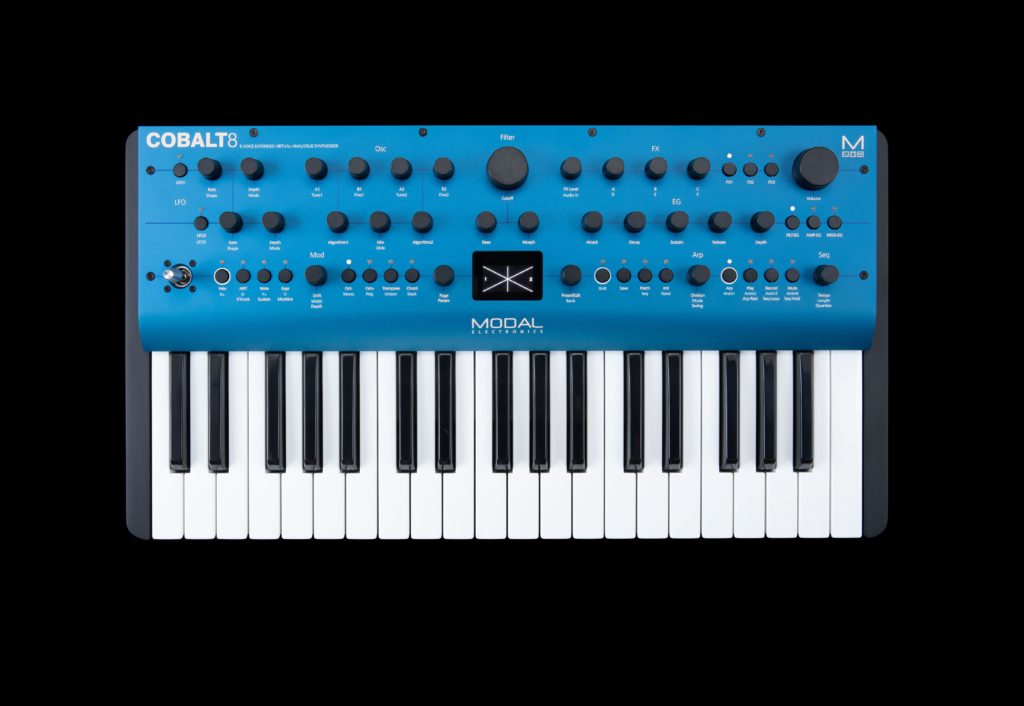
Performance-wise, professional keyboard players will, of course, cherish COBALT8’s rugged, road-ready steel and aluminium chassis and premium FATAR TP/9S 37-note full-size key bed. Better still, the velocity-sensitive keys themselves support aftertouch and deliver smooth action with which to express powerful performances, while COBALT8 itself supports MPE (MIDI Polyphonic Expression) for next-generation expressive creativity. COBALT8’s 29 endless encoders (enabling realtime CC), 24 buttons, and a virtually ‘lockable’ four-axis joystick (assignable to a wide range of modulation destinations) provide direct tactile control over all crucial parameters for instant sound adjustments and changes, ably aided by a large 1.54-inch OLED display for instant visual feedback at all times. And all attractively presented in a compact — 55.5 cm/21.9” (L) x 30 cm/11.8” (W) x 10 cm/3.9” — form factor, flexibility and portability guaranteed. Glide/portamento (with both legato and staccato mode), and multiple — Mono, Poly, Unison (2, 4, and 8), and Stack (2 and 4) — keyboard modes are also at hand, as is stereo Width voice control.
Readily reshaping sounds is also achievable using COBALT8’s three phenomenally powerful, independent, and user- configurable DSP-driven effects engines (FX1, FX2, and FX3), in-depth programming provided. Polish to suit with 11 available algorithms adding character and depth — namely, Chorus, Flanger (Pos), Flanger (Neg), LoFi, Ping-Pong Delay, Phaser, Reverb, Rotary, Stereo Delay, Tremolo, and X-Over Delay.
COBALT8’s capacity for storing patches, sequences, and effects creations is outstanding. Out of the box, 300 of the total 500 patches are filled with factory creations, carefully programmed by some of the most accomplished sound designers in the world, with eight ‘Quick Recall’ slots always accessible from the front panel for fast loading of favourite patches. Performance enhancements continue with 100 sequences that can be linked to any patch for fast loading of arrangements alongside 100 customised effects configurations.
Thanks to two (Right and Left Mono) unbalanced 6.3 mm (1/4”) TS audio outputs, a 6.3 mm (1/4”) stereo Headphones output, a 3.5 mm (1/8”) stereo Audio In (with an ability to route incoming audio through the effects), 6.3 mm (1/4”) Expression and Sustain pedal connections, 3.5 mm (1/8”) analogue clock Sync In and Sync Out connections (configured to the Teenage Engineering/Korg specification), MIDI In and MIDI Out DIN connections, and also a class-compliant USB MIDI connection to a host tablet or computer, COBALT8 is a perfect fit for any live performance or studio setup.
Saying that, the free MODALapp brings the comfort of screen-based editing on a computer or mobile device to COBALT8 (and all other Modal Electronics hardware). Available as a standalone app for macOS (10.10 or above), Windows (8 or above), iOS (12 or above), iPadOS (13 or above), and Android (6 or above), and also in VST3/AU macOS (10.10 or above) and VST3 Windows (8 or above) plug-in formats for keeping users in the flow while producing music with any compatible DAW (Digital Audio Workstation) software, it is the perfect companion for synth enthusiasts looking to dive deep into all sound forming and performance parameters to create their own signature sounds, and to backup and manage patches and sequences.
Musically meeting the requirements of next-generation electronic musicians, synth aficionados, and producers alike, COBALT8 is, indeed, an immensely powerful, eight-voice extended VA synthesiser with which Modal Electronics has creatively kickstarted a new synthesiser series.
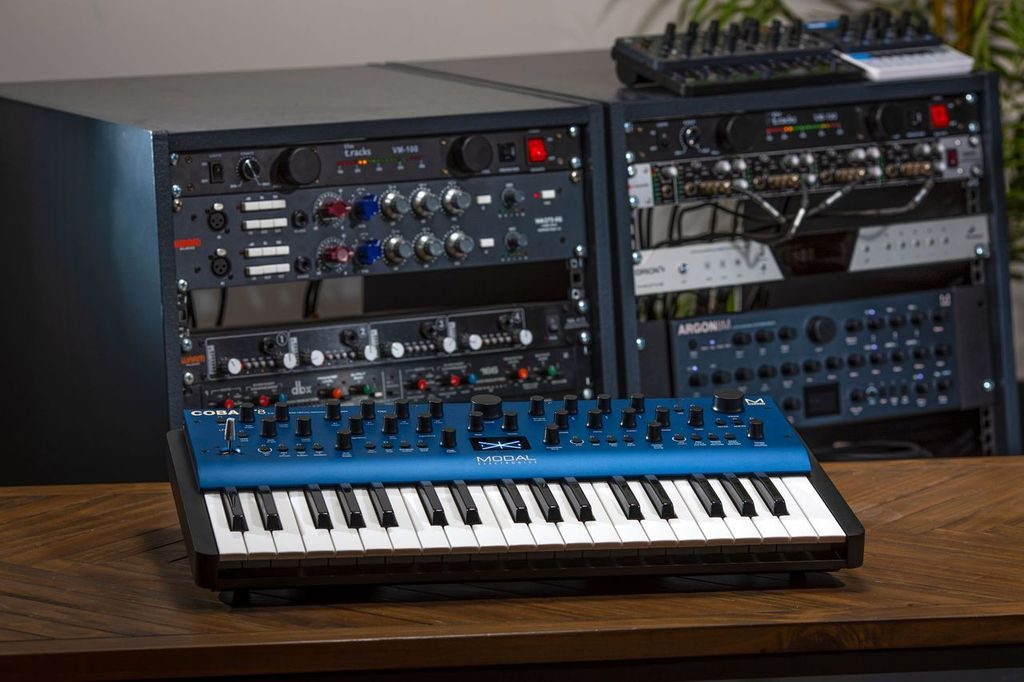
COBALT8 will soon be shipping and available through selected Modal Electronics dealers worldwide in November 2020 with an RRP (Recommended Retail Price) of £579.99 GBP (including VAT), MSRP (Manufacturer’s Suggested Retail Price) of €649.99 EUR (including 20% VAT), and a MAP (Minimum Advertised Price) of $749.99 USD.




